What type of meat rail system is most suitable for your meat facility?
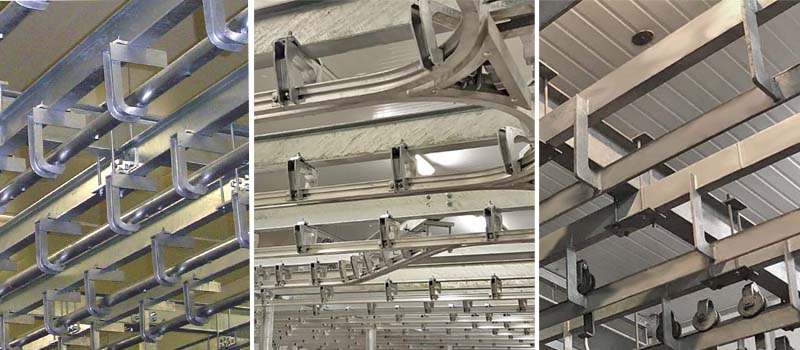
The meat rail system has evolved over the years, meeting the different production needs of each line
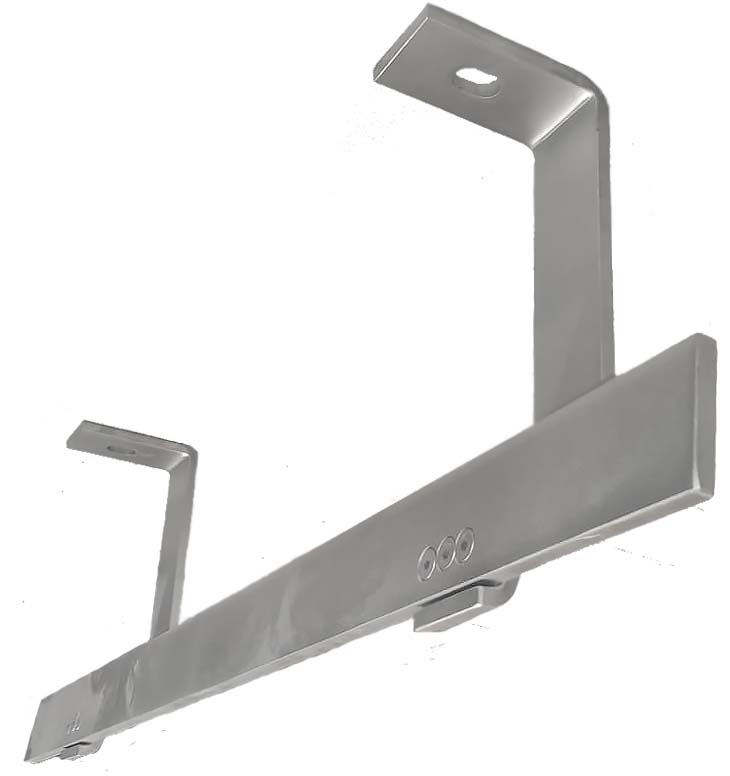
There are at least five types of airway used in meat industries. Choosing one or the other will depend on the circumstances of the production line, as well as the facilities and structures on which you want to place the track. To establish which type of rail is suitable, it is important to know the historical evolution of the different types of track.
The oldest rail in the meat industry is the flat plate monorail . It is a 20 or 12 mm thick flat plate that hangs from a support structure and through which a sheave or wheel circulates that, using a curved plate, removes a hook with meat.
Then it came the tubular monorail, which practically replaced the plate with a 60 mm or 2 "tube. The trolley with the hook removed the sheave wheel, replaced by a 60 mm diabolo adapted to the sheave on the tube. The need to reduce The amount of the investment, as well as the hygienic improvement of the tubular route, has led to its development, with the placement of a plastic profile on the upper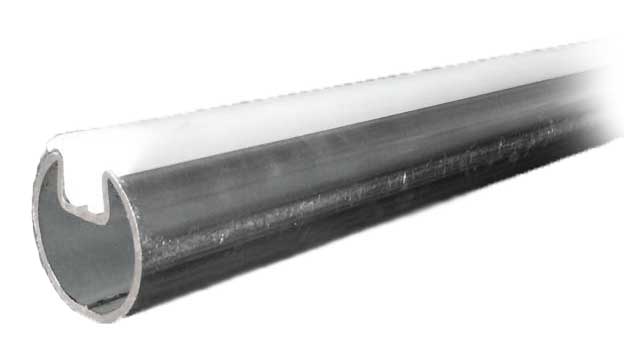 part, which we commonly know as Teflon. It is actually Polyethylene 1000, and allows to eliminate the diabolo of the carriage, as it improves the sliding along the profile.Thus, a new carriage for the tubular track with European standard measures appears on the scene: the Eurohook.
part, which we commonly know as Teflon. It is actually Polyethylene 1000, and allows to eliminate the diabolo of the carriage, as it improves the sliding along the profile.Thus, a new carriage for the tubular track with European standard measures appears on the scene: the Eurohook.
Later, the twin track appeared, which solved any inconvenience that the two previous systems could have. This system provides a second tread profile, so that the trolley runs on two profiles, now already with wheels with bearings. The running profiles, as well as the supports, are made of aluminum, which provides hygiene and less weight. The raison d'être of the double-rail track is that it makes it impossible to fall channels or hooks, providing job security for operators.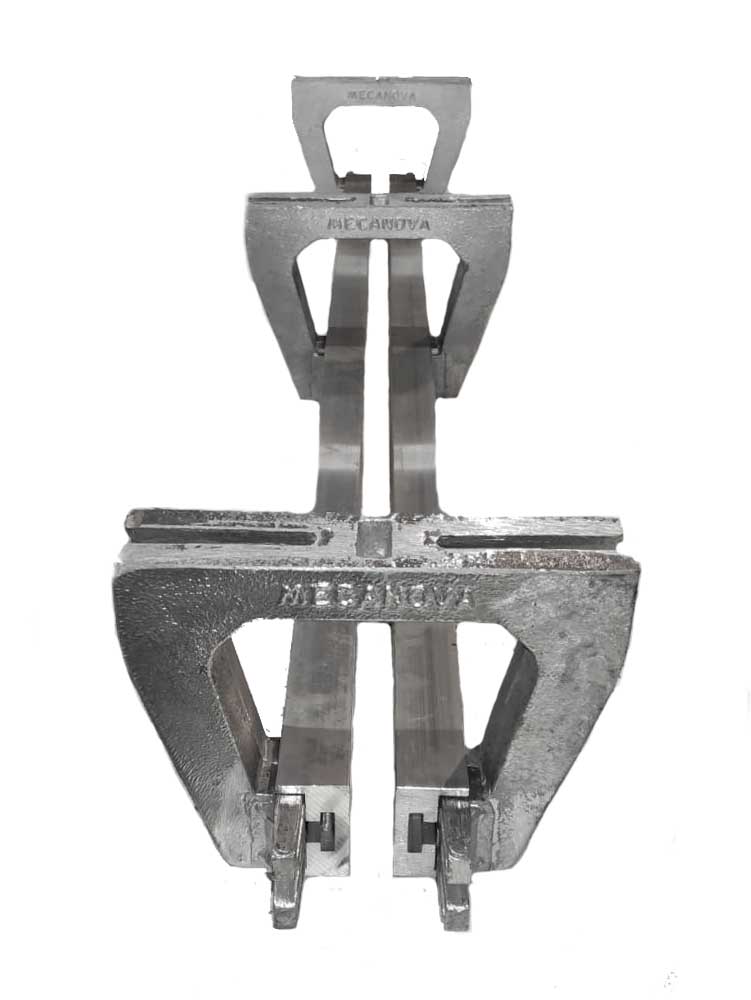
On the other hand, the need to support higher loads for the aluminum double rail track in meat processing facilities, especially in sausage and ham factories, gave way to the development of the stainless steel twin track. As they are factories with a large volume of product, and therefore load, efficient designs of structures are sought. To do this, Mecanova developed and patented the lattice twin track, also made of stainless steel and recommended especially for ham and processed meat factories. In these structures with more strength and robustness are required, whose materials resist corrosive environments, such as those found in these facilities, due to the amount of salt with which they work. The lattice track thus allows a load of up to 3000 kg per meter.
Currently, the mentioned roads are manufactured simultaneously, although it depends on each geographical area, one or another preference is had due to the facilities on which it is built. The flat plate monorail, a more antiquated structure in Spain, is prevalent in South and North America, and is also the most installed in Eastern Europe, Africa or Asia. In the case of Latin America, meat facilities are more suited to the flat pla route, although little by little more advanced structures are being introduced. The tubular track is used in Northern Europe and Germany, but in the same way, more modern systems such as the twin track are being introduced. This is the case of countries in central and southern Europe such as Spain, France and Italy, pioneers in the use of this route, which is much cleaner and cheaper. It is estimated that in Spain, between 90% and 95% of track installations for slaughterhouses were twin track.
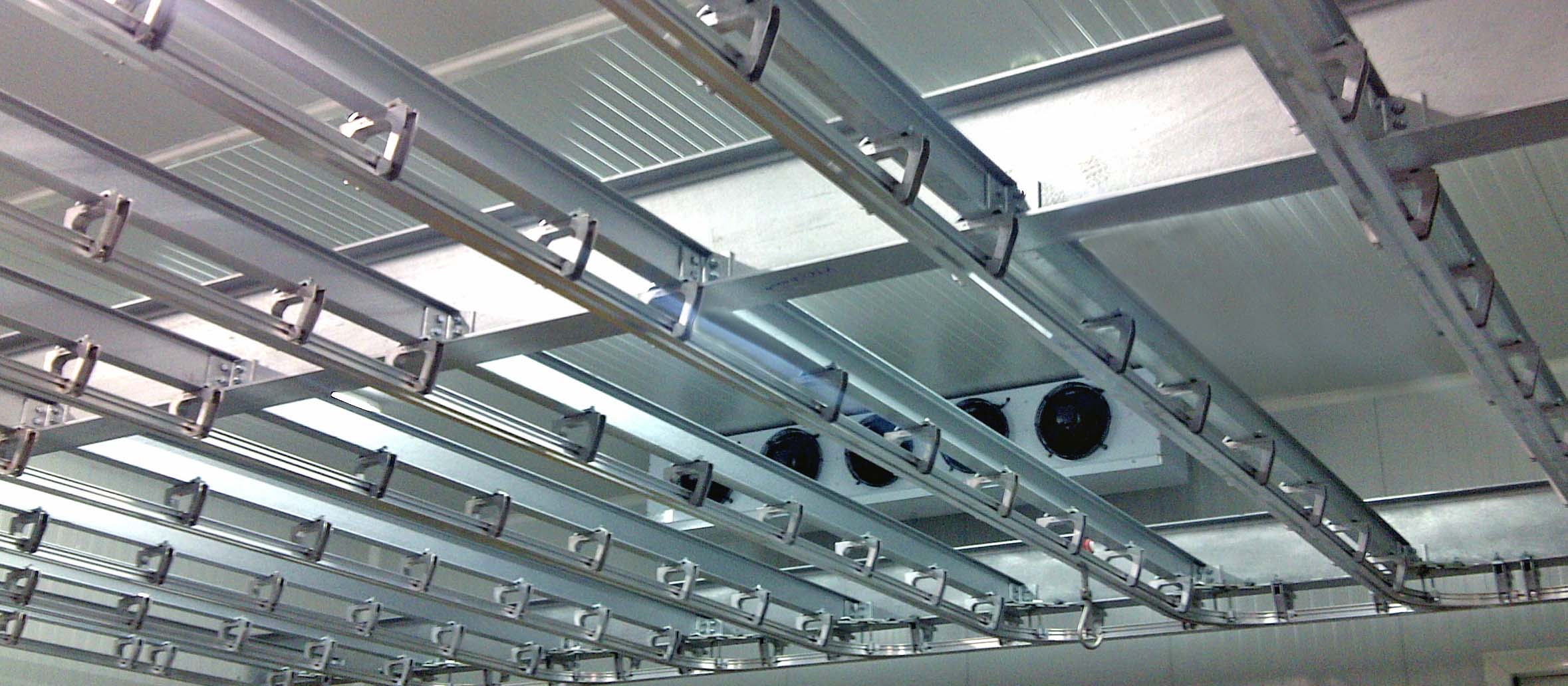
WHAT ARE THE ADVANTAGES AND DISADVANTAGES OF EACH AIRWAY?
Each route has its advantages and disadvantages with respect to the needs of the producers. The correct choice of this goes through a previous study of the facilities and the production that is estimated to be done.
Flat PLate Monorail
Its main advantage lies in the ease of manufacture by any workshop, being also hegemonic in industries with older maintenance structures. On the other hand, it has more drawbacks as there is a higher risk of carcasses falls, as well as the precipitation of metal splinters on these due to the friction of the rolling. It is a type of road that also needs lubrication and maintenance to be always ready, apart from the heavy weight and price of its trolley.
tubular Monorail
Like the flat track, it is easy to manufacture it in any metal workshop, and it also has the disadvantage of the risks of falling channels and the dirt caused by the precipitation of chips. These drawbacks are reduced - without disappearing - with the incorporation of Teflon to the profile, a modernization, which together with the use of Eurohook, becomes a slightly cheaper option. The tubular route is recommended in the bleeding phase, due to its ease of hanging. In this type of track, cars can be entered from any section, something that cannot be done with other types of tracks such as the twin track.
Twin Track system
It is a type of rail, not only cheaper, but also lighter and cleaner. Its double-track profile made of extruded aluminum, as well as its cast aluminium supports have a low cost. The trolleys that circulate on this rail are also made of cast aluminum and represent, in a whole, a structure that is easy to assemble due to its bolted installation without the need for welding. This type is highly recommended for cameras and carcasses storage, due to the convenience this structure generates in the transport of pieces between cameras.
The trolleys are also very light, with a perfect rolling and without risk of falls. All this translates into better work health for workers. The only drawback is that there are few manufacturers, given the high cost of the molds for their manufacture and injection. An added value to the twin track is the lifetime of the rail, since it does not rust and maintains an unbeatable appearance, even 20 years after its installation.




